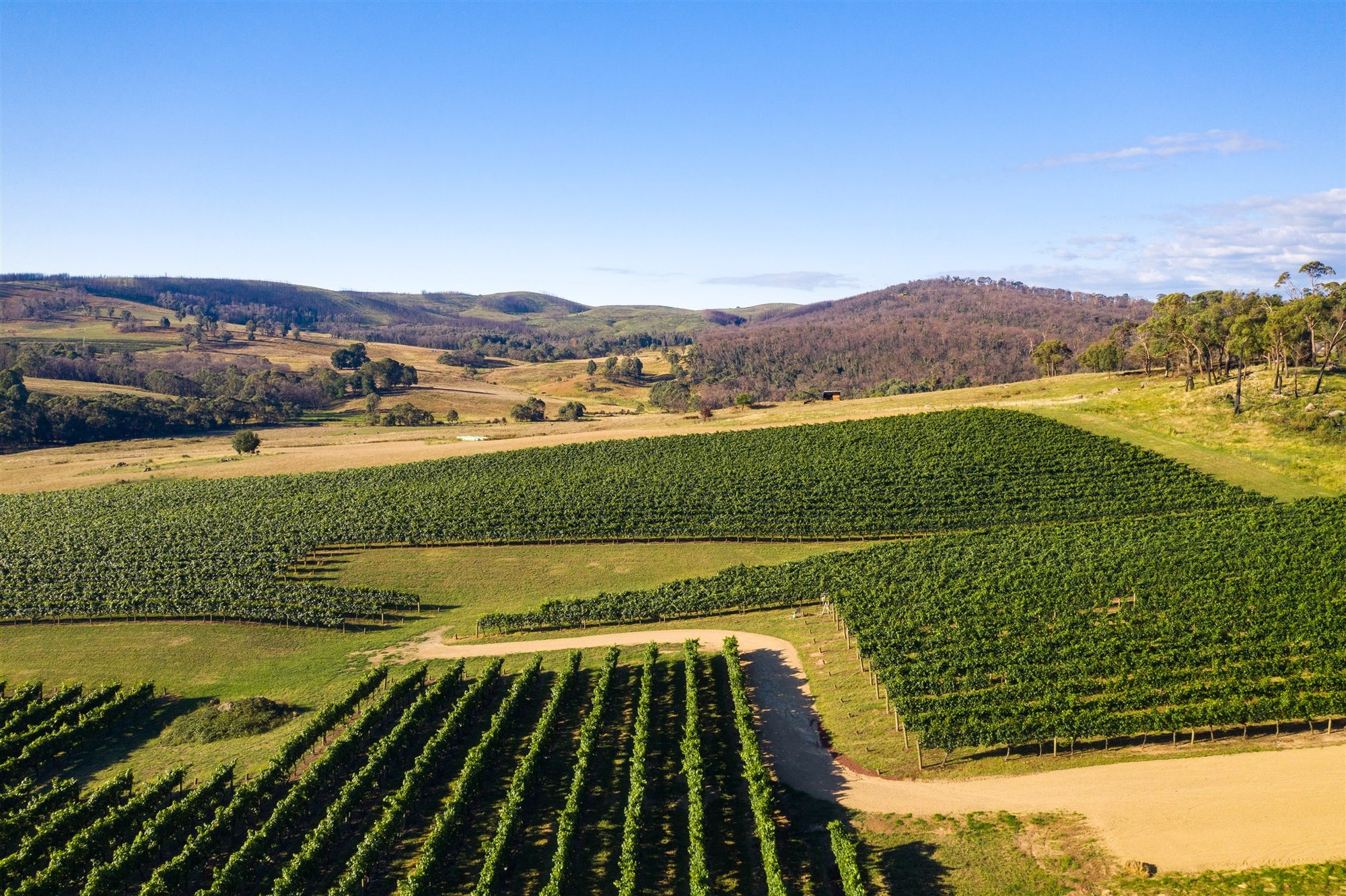History of Wine Region
Tumbarumba Wine Region
Tumbarumba is located 504km south west of Sydney at the foothills of the Snowy Mountains, home to Australia’s highest peak, Mt Kosciuszko. The alpine climate is one of Australia’s coolest and is perfect for producing both premium sparkling and table wines.
The first vines were planted in 1981 by Ian Cowell on his Courabyra Rd property – now known as ‘Revee Estate’. In 1986 Charles Sturt University and Seppelts purchased the first vintage for Sparkling wine. The vineyard expanded to 30 Ha over three years and became the backbone for the highly successful Salinger label from Seppelts. This has led to an increasing recognition of and demand for Tumbarumba fruit from top winemakers Australia wide.
On the 10th December 1998 Tumbarumba was defined as a Geographical Indications (GI) Wine Region of Australia. The vineyards in the region vary in elevations from 500 – 820 metres, rich soil types characterised by decomposed granite, basalt and shale loams are all seen to contribute to the distinct varietal characters. The region shows an average rainfall of 1000mm, with warm days and cool nights. The two main varieties grown in Tumbarumba are Chardonnay and Pinot noir, both for sparkling and table wines, there are some small plantings of Sauvignon blanc, Pinot gris, Reisling, Pinot meunier, Shiraz and Merlot.
Today in Tumbarumba there are 265 Ha planted and 20 operational vineyards producing approximately 2000 tonnes per vintage.
Cool climate viticulture has many challenges, and Tumbarumba is considered a high risk region. This requires good site selection and various growing techniques to minimize the extremes of nature. Despite this the rewards from well managed vineyards are well worth it!

History of Tumbarumba
Named by the indigenous community to mean ‘Hollow Sounding Ground’, Tumbarumba was first settled in 1859 by miners, stockmen, timber getters and farmers after gold was discovered in 1855.
Post war, the construction of the Snowy Mountains hydro scheme saw an influx of migrants to the mountains, the project lasted 25 years from 1949 to 1974. With the gold long since gone and the Snowy Mountain Hydro scheme completed, the township of Tumbarumba is now home to a community of approximately 2500 people.
Tumbarumba today remains a premiere location for the forestry and agricultural industries, its landscape dotted with pine plantations and vibrant cattle and sheep grazing farms. However it is the unique ‘cold climate’ of Tumbarumba that has proved optimal to the development of a rich viticulture industry.


